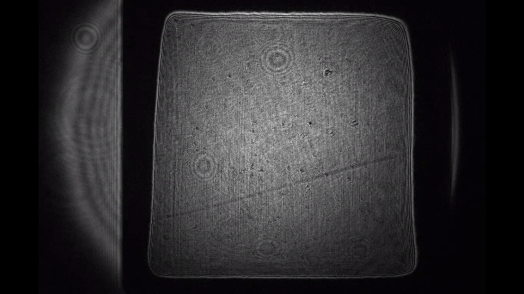After discussing the quirks in 3D modeling software, where a laser beam is treated as a solid object that can cast a shadow, scientists decided to experiment in real life — and found that laser beams can indeed cast a shadow under the right conditions.
The finding that laser light may create its own shadow under certain conditions is the result of a peculiarity in scientific 3D modeling.
Researchers noted in a new report published Nov. 14 in the journal Optica that the discovery calls into question our present understanding of what a shadow is.
Since light often flows through other light without interacting, it was previously believed that laser light could not create a shadow, according to a statement from research co-author Raphael Abrahao, a physicist at Brookhaven National Laboratory. “We are prompted to reevaluate our understanding of shadow after demonstrating a very counterintuitive optical result.
Imagine two flashlight beams passing through one another without either one obstructing the other. Nonetheless, the laser beam is shown as a cylinder in certain 3D computer representations of laser systems. Because those models consider the simulated laser beam as a solid object rather than a ray of light, they give it its own shadow. Some of the scientists questioned whether they could reproduce the event using a real beam during a luncheon discussion about this peculiarity of the modeling system.
Abrahao stated in the release, “What began as a lighthearted lunch conversation turned into a discussion on the physics of lasers and the nonlinear optical response of materials.” We then made the decision to carry out an experiment to illustrate a laser beam’s shadow.

A ruby crystal, a common material for researching peculiar aspects of light, was used in the experiment. At right angles to one another, they shone a blue and green laser into the ruby. They saw a black line where the green laser obstructed blue light from exiting the crystal on a screen across from the blue laser.
This oddity arises from a characteristic of the ruby itself. Along its journey through the crystal, the green laser comes into contact with atoms, which imparts a small amount of additional energy to their electrons. Those electrons can absorb blue light from the second laser when they are in their high-energy state. As a result, the green laser beam blocks the blue light and creates a black line across the screen by acting like an object.
That black line was visible to the naked eye, assumed the form of an item obstructing light, and moved when the researchers moved the green laser—all of which are characteristics of a shadow.
Additionally, the researchers discovered that they could adjust the green laser’s power to produce a lighter or darker shadow. Similar to the contrast of a tree’s shadow on a sunny day, the highest contrast between the screen’s lighted and shaded portions was around 22%.
In the announcement, Abrahao stated, “This discovery broadens our understanding of light-matter interactions and opens up new possibilities for using light in ways we hadn’t previously considered.”
According to Abrahao, this discovery may have applications in a number of domains. One example is optical switching, which is used in technologies like powerful lasers that need precise control over light transmission or in systems that use light to regulate the presence of another light.